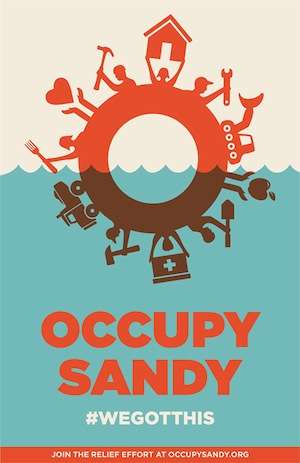Waste, Bureaucracy, and PR Stunts: The Case of the Red Cross (original) (raw)
When centralization meets disaster relief.
| 10.30.2014 1:06 PM
NPR and ProPublica have published a detailed account of the Red Cross' poor performance after Hurricane Isaac and Superstorm Sandy. The story reads like a primer in the problems of centralization, with national headquarters regularly substituting its own judgement for that of the people on the ground. At one point after Sandy hit, for example, HQ

Bigtime Records
issued an edict that the New York operation needed to start producing more meals.
That wasn't the problem, [Richard] Rieckenberg told his superiors. He was in charge of tracking food and, at the time, the Red Cross was already wasting three out of every 10 meals being prepared, he estimates. The real issue was that the Red Cross was failing to gather information about where hungry victims were located.
Officials at the Red Cross' national headquarters stood firm over Rieckenberg's objections. They directed a catering company to increase its output dramatically, from 20,000 to 220,000 meals per day. And it had to start with breakfast for 100,000 the next morning.
In the ensuing chaos, the caterer was only able to deliver 70,000 Danishes the following day, Rieckenberg says. The cost to the Red Cross: about $7 apiece, much more than normal. Top Red Cross officials had assured Rieckenberg that someone would get him the locations where staffers could deliver the meals. The list was never supplied. About half of the pastries were wasted.
Worse still, the leadership sometimes diverted resources from genuine relief to public relations. In Mississippi after Issac,
An official gave the order to send out 80 trucks and emergency response vehicles—normally full of meals or supplies like diapers, bleach and paper towels—entirely empty or carrying a few snacks.
The volunteers "were told to drive around and look like you're giving disaster relief," Rieckenberg says. The official was anticipating a visit by Red Cross brass and wanted to impress them with the level of activity, he says.
After Sandy, a much-needed emergency response vehicle was instead "dispatched to an early December photo-op with supermodel Heidi Klum to tour affected areas with Red Cross supplies." The reporters quote one official's response to the PR stunt: "Did you know it takes a Victoria's Secret model five hours to unload one box off a truck? I was so mad."

Occupy Sandy
The article alludes a couple of times to the more decentralized and volunteer-driven groups that surfaced after the storms. A man from the Rockaways mentions that Mormon and Amish volunteers "appeared at my doorstep offering much-needed help" three days after Sandy, a response he contrasts with the two weeks it took before "the only Red Cross truck my neighbors or I saw" showed up. Later there is a reference to Occupy Sandy, an Occupy Wall Street offshoot whose horizontally organized relief work drew a lot of praise after the storm hit. (At one point, Occupy Sandy had four times as many volunteers in the field than the Red Cross did.)
It makes sense to expect such networks to be more flexible, more capable of adjusting to conditions on the ground, and—when the groups are themselves locally based—more receptive to local knowledge. This is understood even within the halls of the Department of Homeland Security, which commissioned a report last year that highlighted Occupy Sandy's successes. Occupy, the paper concluded, not just complemented the official effort but "in some cases filled critical gaps." (One interesting observation from the DHS report: "In circumstances of rising public distrust of hierarchical institutions, as is the case in many communities within the United States today, it would not be unusual for horizontal grassroots disaster relief networks with strong affiliations within certain communities to be chosen over professional response organizations that might try to assert control over a complex operating environment in a disaster.")
The Red Cross, in comparison, is a lumbering beast. It is essentially a public/private hybrid—the organization is chartered by Congress to fulfill specific mandates, including relief work coordinated by FEMA, but it is formally independent of the government and largely raises its own funds. It devotes far more of its budget to its (very valuable) blood and plasma services than to disaster response, but it uses disasters as a fundraising opportunity. It is clearly better suited for some sorts of recovery work, such as operating shelters, than others, such as the areas where the Mormons and Occupiers outperformed it. And to judge from the NPR/ProPublica report, it suffers from a severe surplus of bureaucracy.
To read the rest of the exposé, go here.
NEXT: Tensions High After White House Official Calls Israeli PM 'Chickenshit'
PolicyNatural DisastersCharity/PhilanthropyHurricane IsaacSuperstorm SandyOccupy Wall StreetBureaucracy